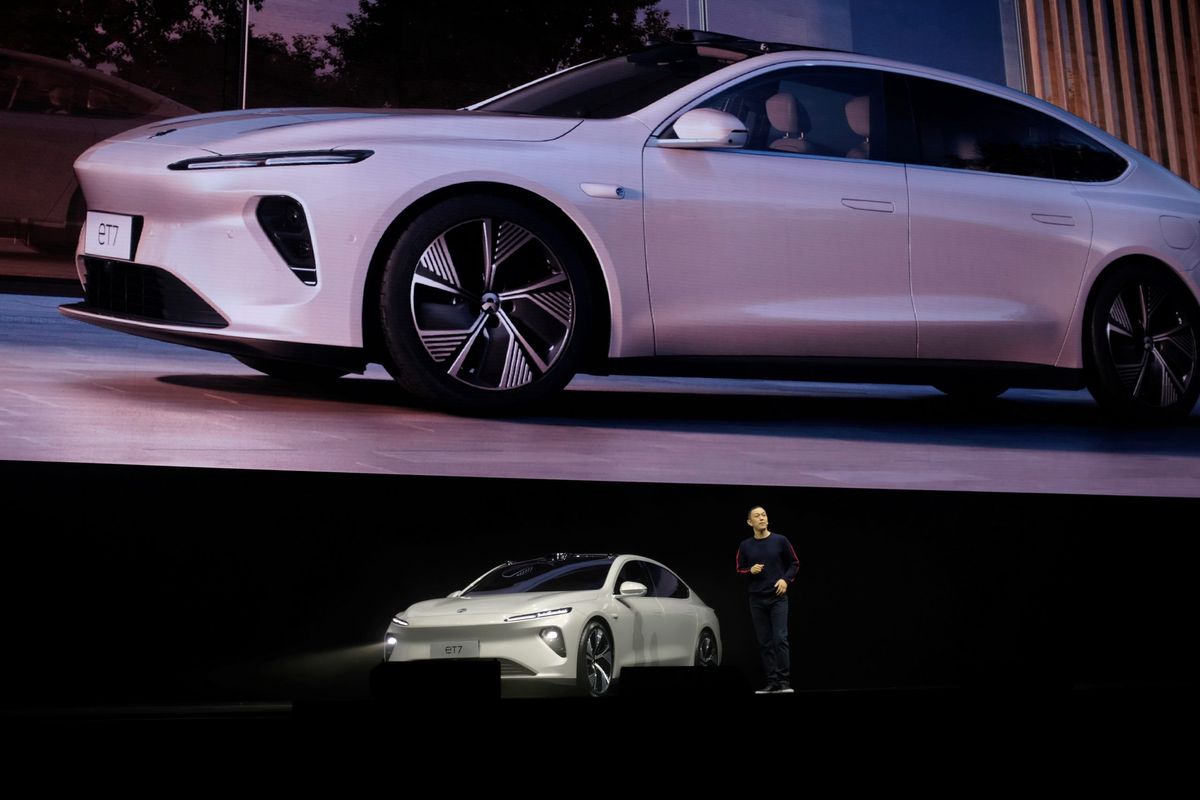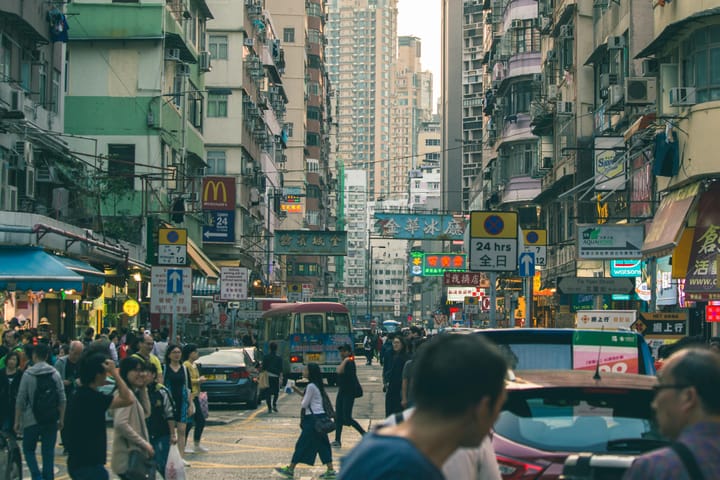What is NIO, Tesla’s biggest Chinese competitor?

A few minutes every morning is all you need.
Stay up to date on the world's Headlines and Human Stories. It's fun, it's factual, it's fluff-free.
China is the world’s largest electric vehicle market, accounting for nearly half the world’s stock of electric vehicles.
American electric vehicle manufacturer Tesla, Inc. has made no secret of its ambitions in China.
China, already the world’s second-largest economy, accounts for a steadily growing market for electric vehicles (EV).
The market share of electric vehicles as a percentage of the total car market in China has steadily increased in recent years, jumping significantly from 0.06% in 2012 to nearly 5% of the total market in 2019.
This means, in absolute terms, China is the world’s largest electric vehicle market, accounting for nearly half the world’s stock of electric vehicles.
This market has been dominated for some time not by domestic electric vehicle manufacturers, however, but by the US-based Tesla. The American electric vehicle manufacturer regularly tops monthly premium EV sales in China, with 2020 sales totaling some 120,000.
But domestic premium EV manufacturers are beginning to tackle Tesla’s dominance.
In particular, Chinese EV maker Nio, Inc. is heading into 2021 off the back of a successful turnaround in its fortunes in 2020 and stands ready to begin the slow climb to challenging Tesla’s market dominance.
Tesla’s dominance
The last year has witnessed a significant expansion of Tesla’s operations in China.
The American electric vehicle manufacturer officially began production of its Model 3 line of vehicles out of its new “Gigafactory” Shanghai in late 2019, a multibillion dollar bet by Tesla on its own expansion into the Chinese market.
Tesla had enough evidence to feel confident in making that bet. In 2019, prior to the completion of its “Gigafactory,” Tesla sales in China had increased by 161% over the previous year.
Now, the multibillion dollar “Gigafactory” seems to be paying off for Elon Musk’s Tesla. The China Passenger Car Association announced that in November 2020, Tesla had sold some 21,604 Model 3 cars, a significant increase from the typical monthly average of around 10,000-12,000.
These sales also represented a 78% increase in Tesla sales on a year-on-year basis.
For all of 2020, Tesla sold some 120,000 cars in China alone, thanks in large part due to significantly ramped up production in the country stemming from Tesla’s “Gigafactory.” By 2022, China could make up more than 40% of Tesla sales, according to analysts at Wedbush Securities.
Domestic competitors
This growth has not gone unnoticed by Tesla’s Chinese competitors.
Though Tesla’s sales are closely matched by other homegrown Chinese brands such as BYD Co., Wuling Automobile Co., and others, these manufacturers do not provide “premium” electric vehicles, an area in which the American manufacturer remains dominant.
But new competition is coming up fast.
Chief among Tesla’s fastest-growing competitors is the Shanghai-based Nio, Inc.
Before Nio could compete with Tesla, however, it had its own challenges to overcome, including a close shave with bankruptcy as a result of high spending on marketing and advertising.
In April 2020, cash-strapped Nio received a crucial US$1 billion investment from entities headed by the local municipal government of Hefei, before receiving an additional US$1.5 billion credit line from Chinese banks in July 2020.
Despite this, Nio has managed to turn its business around.
The company ended 2020 with its shares on the New York Stock Exchange up some 1,112%, with the manufacturer having delivered some 43,728 vehicles that year. Nio also ended the year ranked as the world’s fifth-most valuable automaker.
Nio’s electric vehicles possess some significant differences from Tesla’s. These are, in some respects, an advantage.
Nio’s cars have a standardized battery pack, unlike most other electric vehicles that have unique batteries for each model given the fast-progressing technology that goes into an electric car’s battery.
As a result of this standardized design, Nio can offer a service unlike other electric vehicle manufacturers – battery-swapping.
Tesla vehicles lack this option and can take up to 75 minutes to fully charge.
Although traditional charging is an option for Nio vehicles, “battery-swapping” means that a Nio driver can travel to one of 160 battery-swapping stations in China and have their battery “swapped.”
During this process, a car with a spent battery will be replaced at a Nio battery-swapping station with a battery that is fully charged. Drivers can pay some US$150 a month to get six battery swaps.
Another huge advantage of this charging model is that prospective Nio owners can buy their car without a battery. Nio’s cheapest model, the Nio ES6, typically costs around US$52,200. An entry-level Tesla Model 3, by comparison, costs around some 265,000 Chinese yuan, about US$40,000.
However, if a buyer opts to purchase a Nio vehicle without a battery, the price drops by nearly 20%, as the battery pack alone costs some US$10,700. This would reduce the price of Nio’s ES6 down to around US$41,600, more on par with Tesla’s offering.
Though battery-swapping remains an exception to the rule, with some 160 battery-swapping stations in comparison to a Tesla “supercharger” network of 300 individual stations in China alone, China’s government is increasingly incentivizing “battery-swapping” technology.
Consumers who purchase battery swapping vehicles, with a minimum driving range of 250 miles, can receive around US$3,500 in subsidies from the Chinese government toward their purchase. These subsidies directly help Nio make its vehicle range more affordable.
Having had a successful 2020, Nio is now looking to the future. The manufacturer aims to begin deliveries of a new sedan, the Nio ET7, in direct competition with Tesla’s Model 3, in the first quarter of 2022.
Nio chief executive officer William Li spoke earlier this month of his ambition for Nio to keep “producing premium cars,” while recognizing Tesla’s own “ambition to become a Volkswagen or Ford in electric-vehicle manufacturing.”
Though China is the world’s largest electric vehicle market, car ownership in general still lags behind most other countries with similarly sized economies.
173 out of every 1,000 people in China own an automobile, electric or otherwise, compared to some 837 out of 1,000 in the United States, according to McKinsey & Co.
This leaves a significant amount of room for both Tesla and its domestic Chinese competitors.
With both Tesla and Nio set to unveil new models for sale in China this coming year, it is up to consumers to decide which electric vehicle manufacturer will hold increasing sway over this valuable market.
Have a tip or story? Get in touch with our reporters at tips@themilsource.com




Comments ()